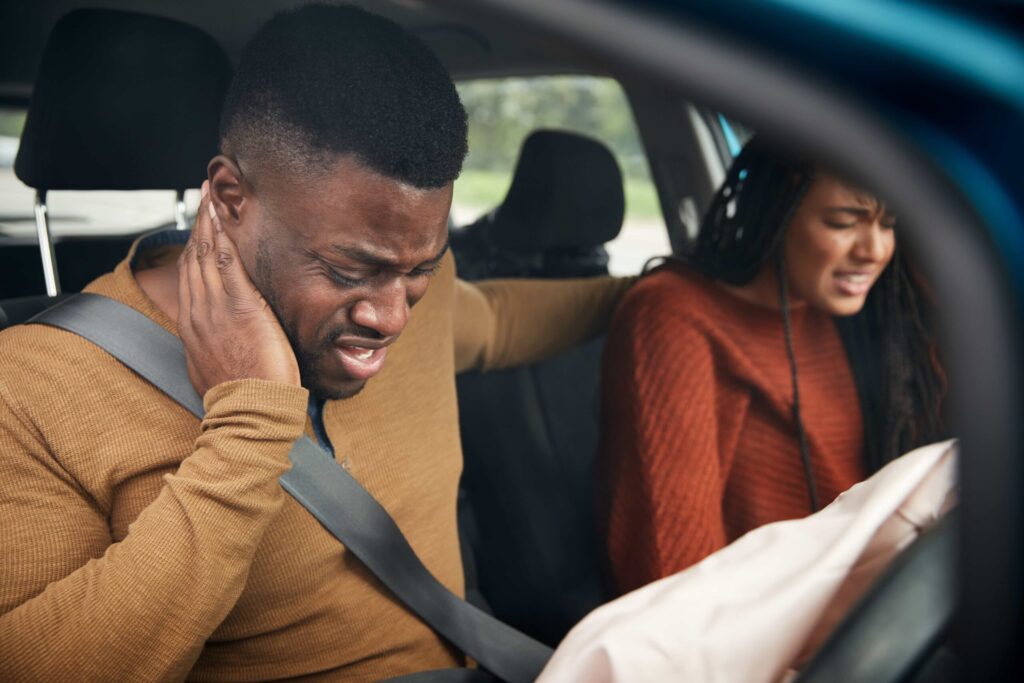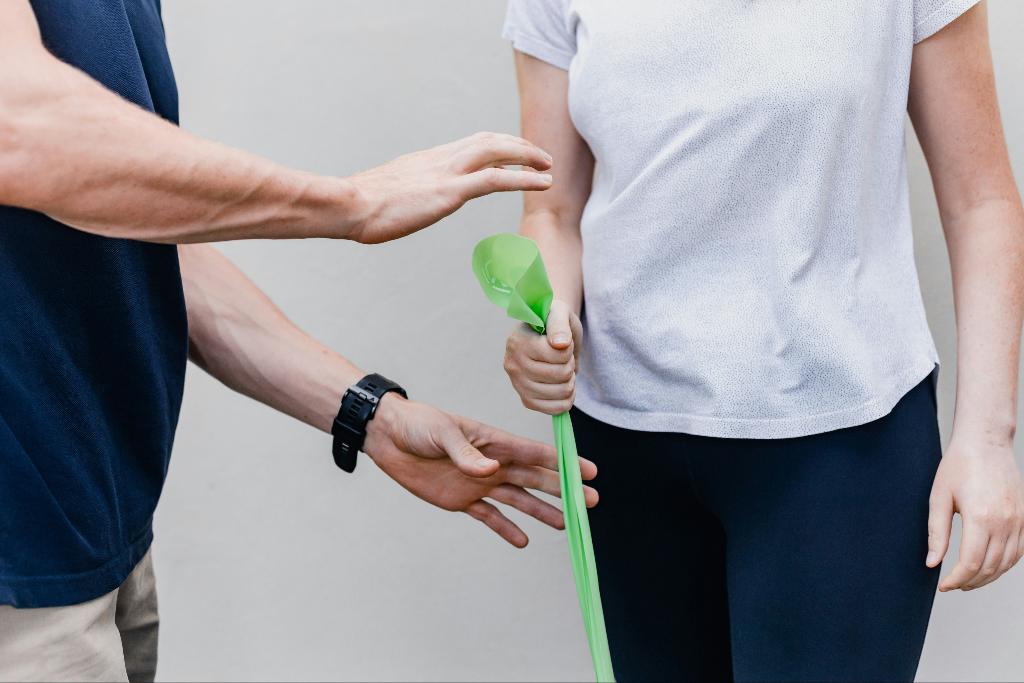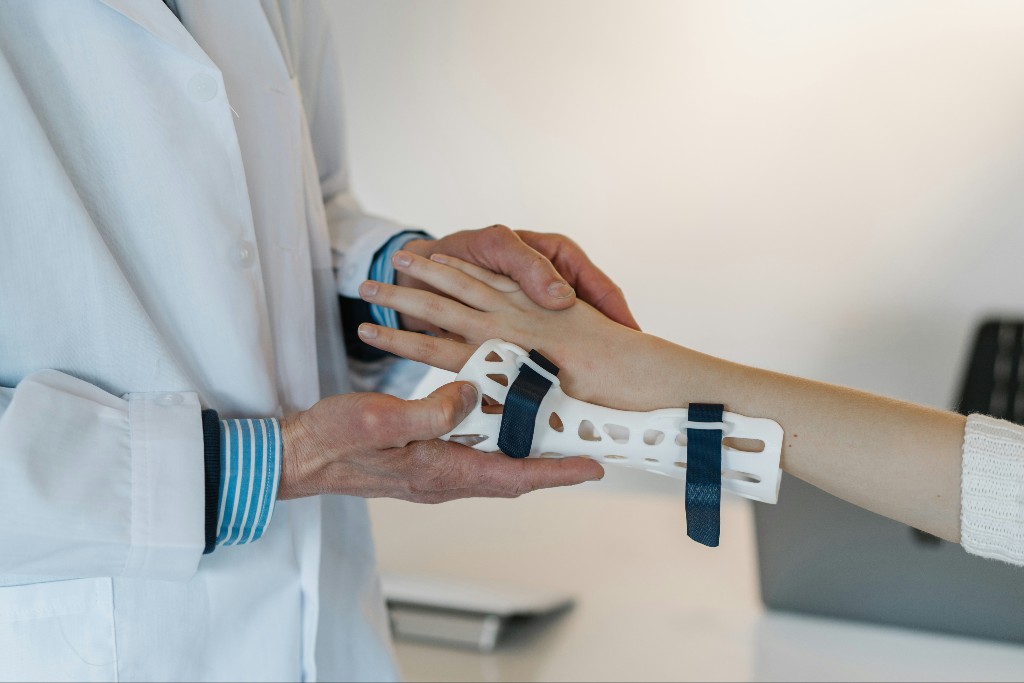Whether you’re on your way to work or taking a road trip to visit family and friends, a car accident can happen when you least expect it. You never think a car accident will happen to you until it does, and you certainly don’t expect to get injured. But what do you do when you end up with a bone fracture after a car accident? A bone fracture, also known as a broken bone, is one of the most common injuries caused by car accidents each year. Even a car accident that seems minor or occurred at a low rate of speed can still result in injuries like a broken bone. The location, type, and severity of the bone fracture will impact the type of treatment you need and the length of your recovery period. Here’s everything you need to know about bone fractures after car accidents and how your team of car accident doctors can help.
How a Car Accident Can Result in Broken Bones
Manufacturers of cars, trucks, and SUVs continue to improve safety features to help keep drivers and passengers safe while on the road. Seat belt laws have helped reduce the number of serious injuries in car accidents over the last few decades, as well as airbags and other improvements in safety standards for all new vehicles. However, car accident injuries can still happen. Here are a few examples of common car accident injuries and how they can result in a broken bone:
Direct Impact
A direct impact refers to when a person’s body is struck by an object, like the steering wheel or dashboard of the car. A sudden and forceful blow to the area can result in a broken bone. Bone fractures that tend to occur with direct impact during a car accident include arm, wrist, leg, and ankle fractures. A direct impact injury can also cause scrapes, deep cuts, bruising, and swelling in the area.
Whiplash Injuries
Your seat belt is designed to help hold your upper body in place and prevent ejection from the vehicle during an accident. However, these safety features cannot prevent your head and neck from getting violently jerked around. The force of impact can cause your head and neck to snap violently forward and backward, leading to a whiplash injury. Whiplash, one of the most common car accident injuries, can also occur alongside other injuries like a fractured shoulder, collarbone, or vertebra.
Deceleration Injuries
A deceleration injury refers to when a person’s body comes to a sudden stop when a car accident occurs. During the crash, this sudden and forceful stop upon impact can cause bones to break because they get subjected to such sudden, high forces. Examples of deceleration injuries include broken bones of the shoulder, collarbone, and ribs. Even when working properly, the seat belt designed to restrain you during the accident can become too tight with the sudden impact and contribute to a broken bone.
Crushing Injuries
A car accident can also result in crushing injuries, where a person gets caught between two objects. An example of a crushing injury includes a person trapped between two cars, which can lead to serious and even life-threatening injuries. A crush injury could also happen to a pedestrian, bicyclist, or someone not in the vehicle at the time of the accident. Crushing injuries can also cause bone fractures, including broken arm and leg bones.
Ejection Injuries
An ejection injury refers to when a person is thrown from the vehicle during an accident. Most ejection injuries occur when a driver or passenger is not wearing a seat belt during the time of the accident. An ejection injury can cause bones to break as they strike the ground or other objects at the scene of the accident. Ejection injuries can also lead to serious or life-threatening injuries because of the risk of head, neck, and spine trauma.
Common Bone Fractures from Car Accidents
Car accidents can cause a variety of injuries, including bone fractures. Here are some of the most common bone fractures that can occur as a result of a car accident.
Arm & Leg Fractures

Collarbone Fracture
A collarbone fracture is a common example of a broken bone after a car accident. The collarbone is one of the bones in the body most susceptible to injury. When worn improperly, a seat belt can put too much pressure on a person’s collarbone and cause the bone to break. A broken collarbone, also known as a clavicle fracture, can occur from sudden, forceful pressure or a direct blow during a car accident. A collarbone fracture will typically cause shoulder pain, bruising, and swelling, and you may notice a slight deformity or decreased shoulder movement.
Rib Fractures
Fractured ribs can occur in a car accident because of a sudden impact or blow to the chest area during the crash. Cracks or breaks of one or more ribs can occur if the driver collides with the steering wheel or the passenger collides with the dashboard. The sheer force of restraint from the seat belt against the trunk of the body during a high-impact collision can also lead to broken ribs. Broken ribs can feel like a sudden, sharp pain that makes it uncomfortable to take deep breaths. Swelling, bruising, and tenderness in the area are also possible with one or more rib fractures.
Spine Fractures
Fractures of the spine can range from simple breaks to spinal cord injuries that can lead to significant impairments. Each vertebra in the spine is a facet joint that can become fractured from a car accident. The spine is particularly vulnerable to fractures in car accidents because of the sudden and immense pressure on the upper body. A spine fracture can occur if a person’s body gets swiftly jerked in one direction and then back again, which can lead to a compression fracture along the spinal column. A severe and direct blow to the spine, like an object that breaks the skin, can cause significant damage to the spinal cord and nerves in the area.
Skull Fracture
A skull fracture can also occur if a person suffers a blow to the head during a car accident. Fractures to the skull can range from a simple crack to a serious injury impacting the brain. The skull is vulnerable to fractures in car accidents because a hard hit to the head can cause what’s known as a hairline fracture in the skull. Getting struck by a flying object inside the vehicle or a penetrating object during the crash can cause significant injury, and all head injuries should get checked out by a medical professional as soon as possible.
Pelvis Fracture
A car accident can also lead to a broken pelvis, which is a serious injury that can occur with high-impact collisions. It takes a significant amount of force to cause a pelvic fracture, and this type of broken bone can make it difficult to sit without pain. The pelvis protects many vital organs, including the bladder and intestines, so damage to this area may require surgery to correct any serious damage and ensure body motion and function going forward.
Treatment Options for Bone Fractures After Car Accidents
It is important to note that the specific way in which a car accident causes a broken bone will depend on the specific circumstances of the collision, as well as the position of the person’s body at the time of impact. The severity of a bone fracture will also depend on the location and specific bones and other soft tissues involved. The type of fracture will also impact the type of treatment necessary to recover after a car accident. These are some of the treatment options that a car accident doctor will use to treat bone fractures after car accidents.
Rest
Resting after a car accident is an important part of the healing process. You may also need to reduce the amount of movement near the broken bone or avoid bearing any weight in the area. For example, a broken leg or ankle may require that you use crutches or a wheelchair to keep off the broken bone while it heals.
Splinting
A splint may be used to help support the bone fracture and keep it in place while it heals. Splints are typically made of hard materials like metal or plastic and are often used temporarily. You may get a splint to hold the broken bone in place until you can get to an orthopedic doctor who will put a cast on the broken bone.
Casting
Some broken bones require casting, like a broken arm, elbow, or wrist. A cast is typically made of plaster or fiberglass and is used to hold the bone in place for a longer period of time than a splint. You could also need a cast to heal from a leg or ankle fracture. Some broken bones, however, cannot be healed using a cast because of their location or the type of fracture that occurred.
Medication
Your doctor will also talk to you about your options for medication to help with pain and other symptoms after a broken bone. It is important to note that pain medication, like over-the-counter pain relievers or prescription painkillers, can help manage discomfort but does not heal the bone at the source. Therefore, medicine can be a supplement to your treatment but not your only course of action to heal a broken bone after a car accident.
Physical Therapy
In some cases, you may require physical therapy to help you fully recover from a bone fracture after a car accident. Physical therapy can provide you with the necessary tools to reduce your pain and improve your mobility and strength after the bone heals. A physical therapist can walk you through stretches and exercises that will reduce the risk of muscle weakness while also improving your range of motion while you recover.
Surgery
In some cases, surgery may be necessary to treat a broken bone from a car accident. Surgery for a bone fracture can involve using screws, plates, or rods that help hold the broken bone in place while it heals.
How to Shorten Your Recovery Time after an Accident
Recovering from a broken bone will take time and can be a challenging process for many people. However, when you follow your specific treatment and recovery plan, you can help shorten the length of time you are off your feet and that your activities are limited. Depending on the specific type of broken bone and the severity of the break, your doctor will talk to you about an appropriate treatment and recovery timeline based on your overall health. It is important to follow the treatment plan prescribed by your car accident doctor to ensure the best possible outcome. Make sure to get plenty of rest and avoid activities that may put too much strain on the broken bone.
If you suffered a bone fracture after a car accident, talk to a car accident doctor near you to get the quality treatment and care you deserve. At AICA Orthopedics, our team of car accident doctors includes orthopedic doctors, physical therapists, chiropractors, neurologists, and more, who all work together to provide you with a personalized treatment plan for your injuries. Call or visit us online to find a convenient AICA Orthopedics car accident clinic near you, and get started with our team today.





